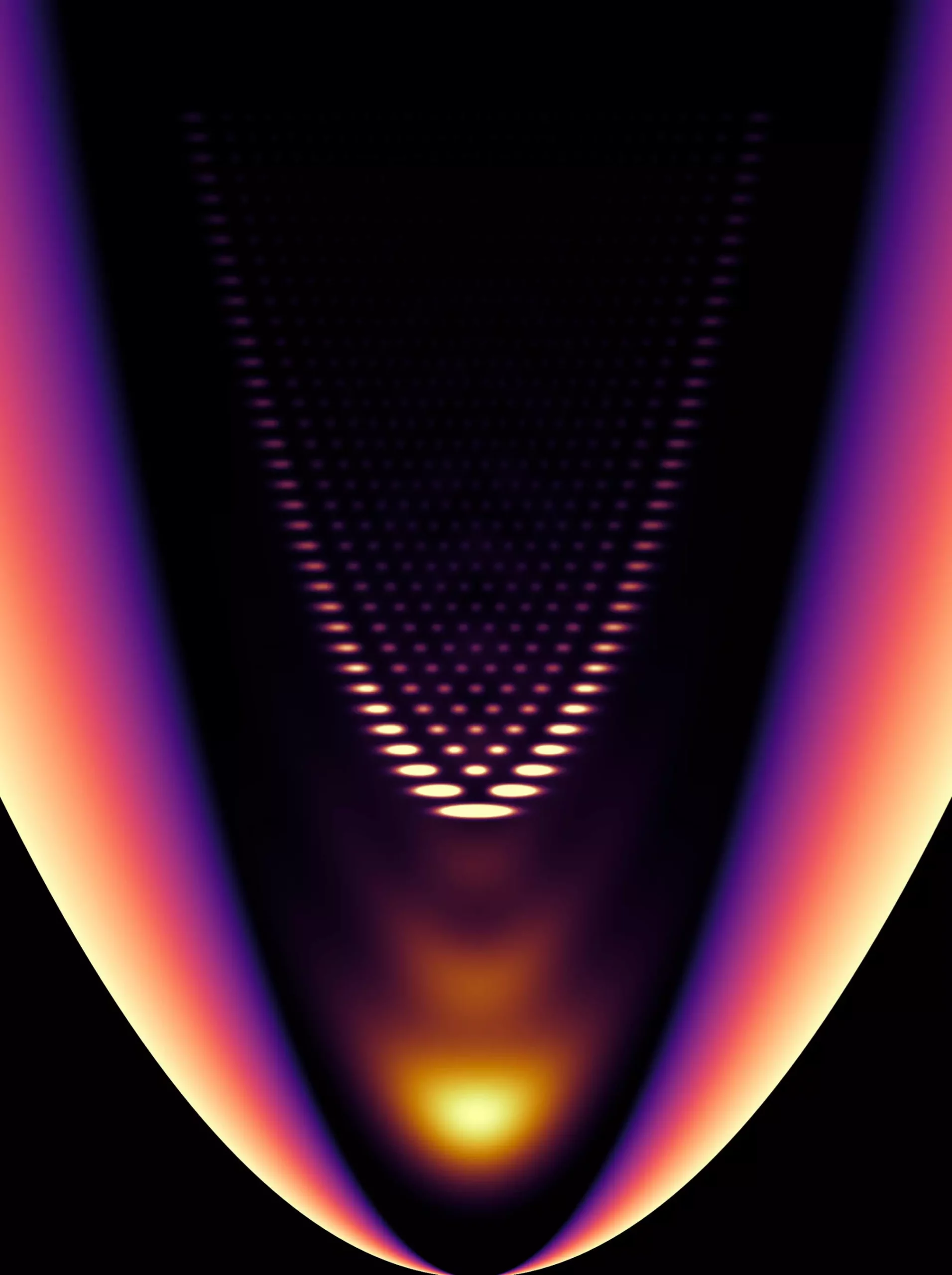In a groundbreaking experiment, physicists from the University of Bonn and the University of Kaiserslautern-Landau (RPTU) have forged new territory in the study of quantum physics by creating a one-dimensional gas composed of light particles, or photons. This innovative approach enables them to empirically test theoretical predictions regarding transitions into this exotic state of matter for the very first time. Published in the prestigious journal *Nature Physics*, the findings of this study could pave the way for a deeper understanding of quantum effects that govern the behavior of such gases under various dimensional constraints.
The Experimental Setup: A Visual Analogy
To understand the process involved in creating a one-dimensional photon gas, consider the analogy of filling a swimming pool with water versus a gutter. When water flows into a pool, the surface level changes minimally because the water disperses across a vast area. In contrast, pouring the same amount of water into a narrower gutter creates a more pronounced wave effect—illustrating how dimensionality can affect fluid behavior. The tighter confines of the gutter force the water into a more organized flow, resulting in higher amplitude waves. Similarly, the researchers aimed to investigate whether this concept could be applied to gases made up of light.
Dr. Frank Vewinger from the Institute of Applied Physics (IAP) highlighted the necessity of concentrating numerous photons in a confined space while simultaneously cooling them to achieve such a state. By employing a dye solution excited by a laser, the researchers created conditions that allowed photons to bounce off reflective surfaces and cool upon colliding with dye molecules, successfully condensing the photon gas into a one-dimensional form.
Innovative Techniques in Photonic Manipulation
The collaboration between the IAP and the RPTU research group, led by Professor Georg von Freymann, marked a significant advancement in the field. Employing high-resolution structuring techniques, the team applied a transparent polymer to the reflective surfaces of their photon container, adorning them with microscopically small protrusions. These characteristics acted much like a gutter for photons, permitting researchers to channel the light particles along restricted dimensions. As Kirankumar Karkihalli Umesh, the study’s lead author, articulates, the narrower the “gutter,” the more distinctly one-dimensional the behavior of the gas becomes.
This experimental design not only showcases innovation in manipulating the behavior of light but also underscores the intricate relationship between dimensionality and thermodynamic properties in quantum gases.
A pivotal aspect of this research involves the concept of phase transition, particularly how it differs between two-dimensional and one-dimensional systems. In two-dimensional environments, a clear temperature threshold dictates when condensation occurs—akin to water freezing at zero degrees Celsius. Nonetheless, the scenario shifts dramatically when one-dimensional gases are the focus. Here, the thermal fluctuations become significantly pronounced, leading to an absence of a well-defined condensation point. These fluctuations disrupt the orderly nature of the one-dimensional gas, manifesting as chaotic behavior that diverges from quantum expectations, generating localized variances in the system, akin to water freezing into a semi-stable state without completing the process.
Dr. Vewinger remarked on the novelty of their findings, confirming that the transition from a two-dimensional to a one-dimensional photon gas is characterized by this lack of precise condensation. This insight has opened avenues for further investigation, as minor adjustments to the polymer structures can yield valuable insights into the transitional phenomena between various dimensional states.
Although this work currently resides within the realm of fundamental research, the potential applications of this discovery are profound. Understanding the behavior of one-dimensional photon gases could facilitate advancements in quantum technologies, including quantum computing and optical systems. As researchers delve deeper into this field, these findings may serve as a catalyst for harnessing and manipulating quantum optical effects in practical applications.
The creation of a one-dimensional photon gas by the scientists at the University of Bonn and RPTU not only validates theoretical predictions concerning exotic states of matter but also establishes a foundation for future explorations into the dynamics of quantum physics. As they push the boundaries of our understanding, the intricate understanding of light and matter they uncover has the potential to redefine applications in numerous scientific domains.


Leave a Reply